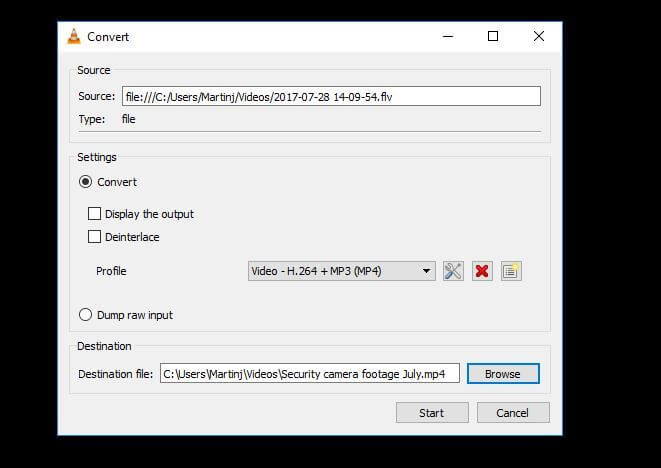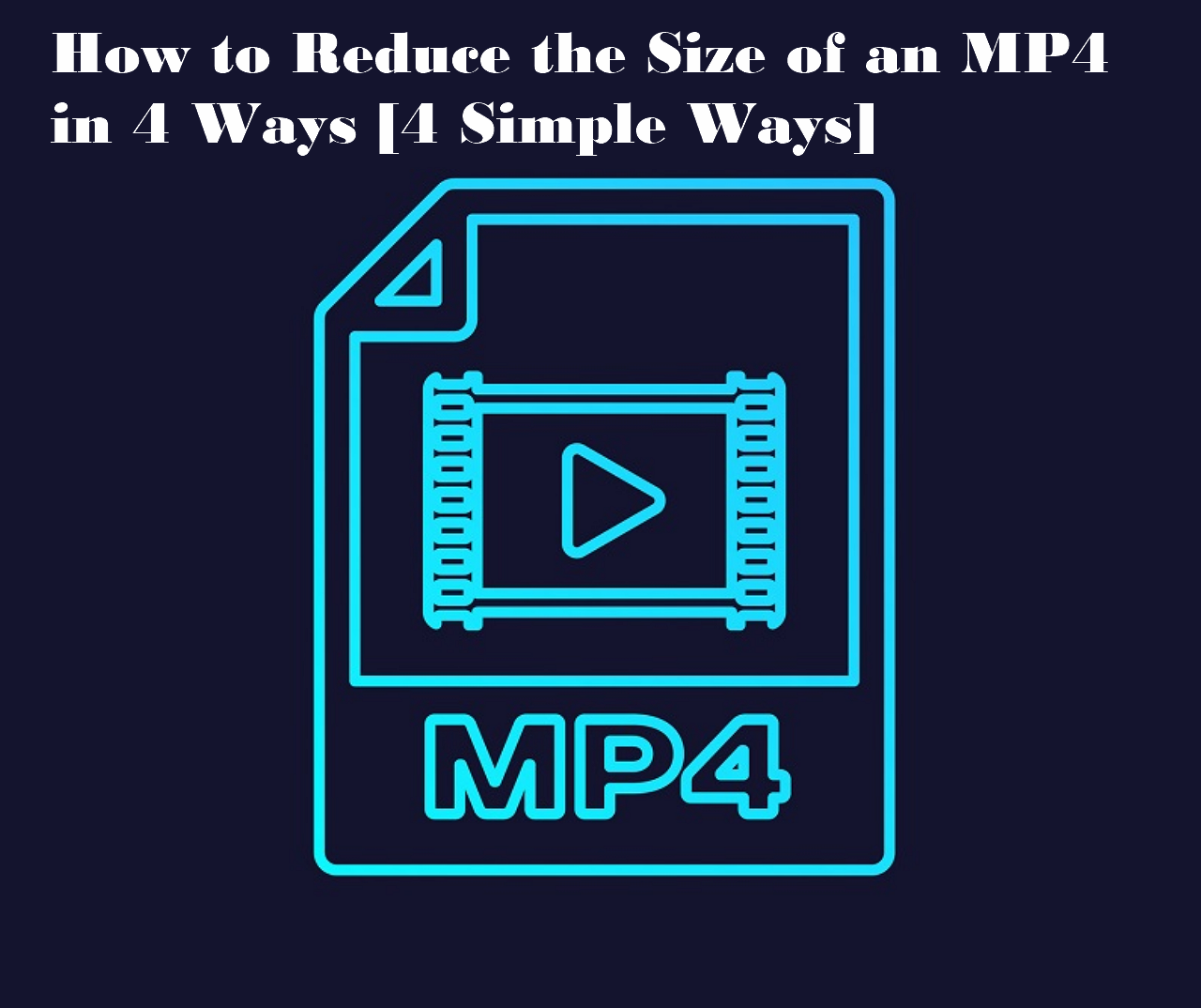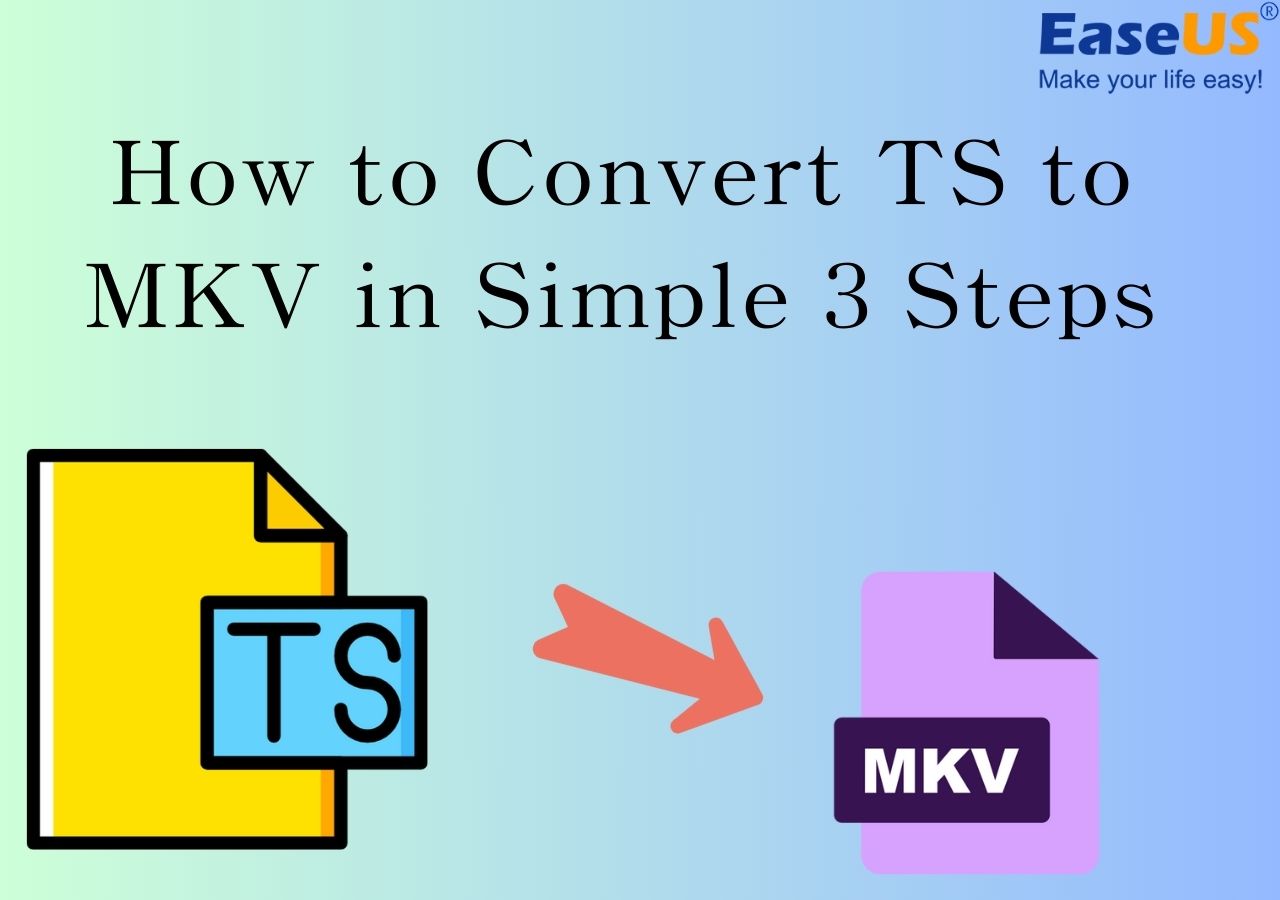-
![]()
Sofia Albert
Sofia has been involved with tech ever since she joined the EaseUS editor team in March 2011 and now she is a senior website editor. She is good at solving various issues, such as video downloading and recording.…Read full bio -
![]()
Alin
Alin is a sophisticated editor for EaseUS in tech blog writing. She is proficient in writing articles related to screen recording, voice changing, and PDF file editing. She also wrote blogs about data recovery, disk partitioning, data backup, etc.…Read full bio -
Jean has been working as a professional website editor for quite a long time. Her articles focus on topics of computer backup, data security tips, data recovery, and disk partitioning. Also, she writes many guides and tutorials on PC hardware & software troubleshooting. She keeps two lovely parrots and likes making vlogs of pets. With experience in video recording and video editing, she starts writing blogs on multimedia topics now.…Read full bio
-
![]()
Gorilla
Gorilla joined EaseUS in 2022. As a smartphone lover, she stays on top of Android unlocking skills and iOS troubleshooting tips. In addition, she also devotes herself to data recovery and transfer issues.…Read full bio -
![]()
Rel
Rel has always maintained a strong curiosity about the computer field and is committed to the research of the most efficient and practical computer problem solutions.…Read full bio -
![]()
Dawn Tang
Dawn Tang is a seasoned professional with a year-long record of crafting informative Backup & Recovery articles. Currently, she's channeling her expertise into the world of video editing software, embodying adaptability and a passion for mastering new digital domains.…Read full bio -
![]()
Sasha
Sasha is a girl who enjoys researching various electronic products and is dedicated to helping readers solve a wide range of technology-related issues. On EaseUS, she excels at providing readers with concise solutions in audio and video editing.…Read full bio
Page Table of Contents
0 Views |
0 min read
"Is AC3 better than AAC?" "What's the difference between these two audio formats?"
As you may be aware, there are countless audio and video formats out there. Today, you can learn more about AC3 and AAC audio files. You may not have seen them before, but it is a fact that you have at least seen one video with AAC or AC3 audio. If you are more knowledgeable of these formats, you may have the most common doubt: which audio is better?

These two audio formats have long been mixed despite their differences. Here, you will discover exciting facts regarding these formats' strengths and weaknesses. If this interests you, stick around to learn some more.
EaseUS Video Converter
- Convert AC3 to AAC or vice versa
- Best free audio converter on Windows
- Merge AC3 or AAC files into one file
- Extract audio track from the video file
AC3 vs. AAC | Which One to Choose?
If you don't know their differences, here is a simple yet exciting comparison:
Definition - AC3, or Audio Coding Version 3, is an audio format developed by Dolby Laboratories. AAC, also known as Advanced Audio Coding, is defined by the MPEG4 standard.
Related Article>> M4A vs MP3
Compatibility - AAC is a standard audio format for YouTube and many gaming consoles. Likewise, it's compatible with mobile phones and most car audio systems, and AC3 is less compatible as it's commonly used in HDTV broadcasts, DVDs, Blu-ray discs, and game consoles. Likewise, both of these formats are compatible with Windows and Mac.
Related Article>> MOV vs MP4
Quality - As the MPEG4 standard, AAC codec creates small digital audio files that allow storing more audio files in less space while maintaining great sound quality. Suppose you want to get the most out of your AC3 tracks. Thus, choose an amplified cinema system that supports Dolby Digital, making it more complicated to get the same results as in AAC.
So, AAC is a more advanced lossless audio format compared to AC3. It produces better audio quality than AC3 at the same bitrate, especially at low bitrates.
Related Article>>AAC vs MP3
Bitrate - AC3 provides a bit rate of 384 kilobits per second. Its sampling rate is up to 48 kHz. It is also used for 640kbps movies. However, AAC is an excellent way to output 400 kbps for 5.1 audio channels and 180 kbps for stereo.
Related Article>>MKV vs MP4
Overall, the competition is very close. If you want to get excellent audio quality in a movie, whether on DVD or BluRay, you can't go wrong with AAC. Remember that the AC3 format is used almost exclusively for video and often requires specially licensed software or hardware to encode or decode. Note that AC3 is generally considered in "irreversible" format. Still, not all AC3 encoded files are lossy compressed, and they can be encoded in a lossless format using converting software.
Finally, assuming you use either AAC or AC3 to encode audio at the same bitrate, you can use either. However, AAC could still be a bit better, as it is newer than AC3, and it proved to be a good codec in every way compared to MP3s.
Convert AC3 to AAC or vice versa
Even though you can use any of these audio formats for the same reasons, you might still want to convert from one format to another! In that case, you need an AAC to AC3 converter for your Windows computer. A great choice is EaseUS Video Converter. This fantastic software is packed with advanced converting technology that can quickly change one format to the other without compromising its quality. Also, you can edit aspects like image frame, resolution, encoding, and FPS to make it look more attractive after the conversion!
Likewise, you are not bound to convert one track at a time as it is possible to use batch conversion. Additionally, it has a clean and easy user interface, which any type of user can quickly grasp. As a conversion geek, you should know that this software supports more than three hundred audio codecs like MP3, FLAC, OGG, and M4A.
Features:
- Edit audio and video parameters
- Convert AAC to AC3 or other audio files
- Merge media files into one single file
- Extract audio track from video files
How to make this audio conversion, using EaseUS Video Converter:
Step 1. Download this converter on your computer and launch it. Go to the "Audio Converter," and you can import the audio you want to convert by clicking on the "Choose Files" button.

Step 2. Click on the "Settings" icon, and you will see a "More Options" window. There is a format list on the window, and you need to select AAC as the output format.
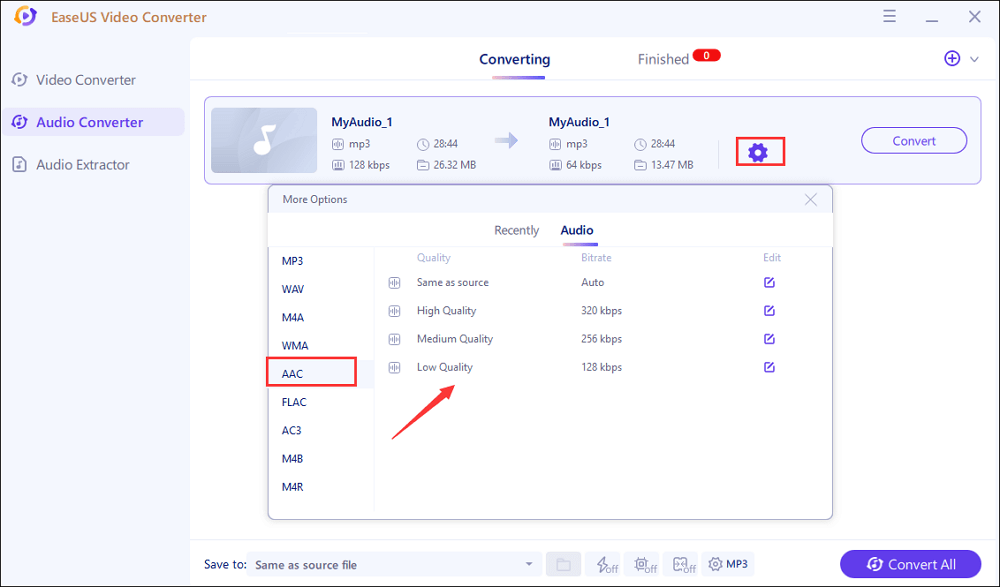
Step 3. Customize the save path. Then, click on the "Convert" button to process the audio you imported. There is also a "Convert All" button for batch conversion.
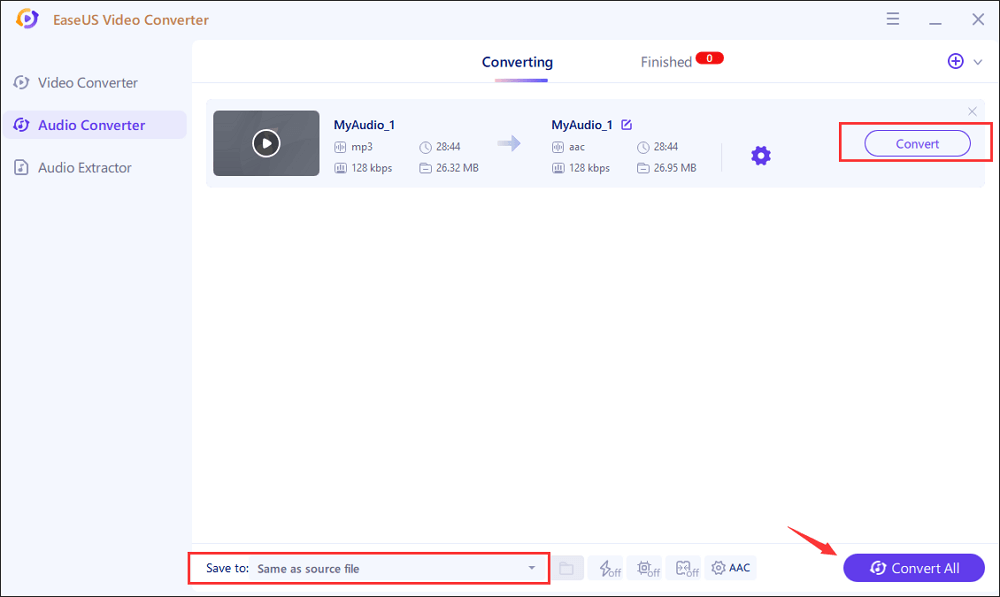
Step 4. The converted AAC audio file can be found in the "Finished" tab, and you can preview it with a built-in player.

Overview of AC3 & AAC
AAC was developed in collaboration with AT&T, Bell Laboratories, Fraunhofer IIS, Dolby Laboratories, Sony Corporation, and Nokia back in 1997. That same year, it was declared an international standard by the Moving Picture Experts Group. The AC3 is even older than the AAC as it was initially called Dolby Stereo Digital until 1994. In early 1997, Dolby Laboratories officially changed "Dolby AC3 Surround Sound" to "Dolby Surround Digital."
AC3, also known as Dolby Digital, is an audio compression technology that stores audio in a lossy form. It can use up to six audio channels. The most common one used by customers is the 5.1 channel configuration, five channels for normal-range speakers and one for the extra low-frequency effects.
AAC is an abbreviation for Advanced Audio Coding. This audio coding standard for lossy digital audio compression is called the successor to MP3. It has a higher reduction and better sound quality than MP3 at the same bit rate. It has a maximum of 48 channels but is often used in 2-channel mode.
FAQs About AC3 vs. AAC
Here are some questions gathered from the public.
1. Is AC3 better than AAC?
In theory, there is no doubt that AAC is better than AC3, and both formats have their perks and disadvantages. The undeniable truth is that there is much more to consider when measuring the value, and comparing AC3 to AAC is no exception.
Also, you can consider the sampling rate. Higher sampling rates allow you to capture more sound waves. Still, you can hardly hear extraordinarily high or low-frequency sounds, and a sampling rate of 48kHz is sufficient to provide high-quality audio.
The fact that DVDs and BluRay don't support AAC also seems to reduce the importance of AAC. However, AAC's highly efficient compression ratios and its extensive audience base on the web allow AAC to continue to thrive. So, if you like watching DVDs and BluRa movies with surround sound, AC3 is a better choice. Otherwise, AAC should be your go-to audio.
2. Is AAC good for surround sound?
AAC gives you 5.1 surround sound and is the audio standard on DVDs and the digital TV audio standard.

